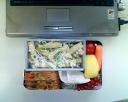New DNA sequencing technologies & human genome variation, San Diego, HGVS Meeting (ASHG satellite). From the program
On the road to the € 1,000 human genome sequence, DNA sequencing technology is currently developing at an incredible speed. Although we are still far from the ultimate goal, DNA sequencing cost has already dropped close to the range of € 1,000 per 1 million nucleotides. These developments have tremendous consequences for the number of DNA variants that we will discover, both pathogenic and harmless. To get an up-to-date overview of the technologies behind this revolution, the HGVS has selected DNA sequencing technologies as this year’s special topic for its annual meeting. Speakers from the major players in the field have been invited to explain in detail the different technologies, their strong and weak points and to show some first innovative applications and results using the new sequencing power.
CC-BY-NC Science Surf
accessed 29.11.2025


